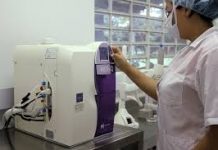January 2013 - Up to 75-percent of patients who take statins to treat high cholesterol may suffer from muscle pain. Scientists at the Center for Healthy Aging at the University of Copenhagen have identified a possible mechanism underlying this unfortunate side effect. The results have just been published in the well-reputed Journal of American College of Cardiology.
Statin is a class of drugs which are used to treat high levels of blood cholesterol by way of inhibiting the liver's ability to produce cholesterol. Statins are the most potent drugs on the market for lowering low-density cholesterol (LDL). At present 600,000 Danes with elevated cholesterol levels take statins daily. 30-40 percent of the older Danish population (ages 65+) are currently undergoing treatment.
"A well-known side effect of statin therapy is muscle pain. Up to 75 percent of the physically active patients undergoing treatment for high cholesterol experience pain. This may keep people away from either taking their medicine or from taking exercise - both of which are bad choices," says Professor Flemming Dela from the Center for Healthy Aging at the University of Copenhagen. He continues:
"We have now shown that statin treatment affects the energy production in muscles. We are working on the assumption that this can be the direct cause of muscle weakness and pain in thepatients."
Scientists also showed that the patients examined who were being treated with statins had low levels of the key protein Q10. Q10 depletion and ensuing lower energy production in the muscles could be the biological cause of the muscle pain that is a problem for many patients.
Continue Reading Below ↓↓↓
Side effects of statin therapy
About 40 percent of the patients being treated with statins in Denmark are in so-called 'mono therapy' and thus are prescribed only this one drug. Presumably these are people who 'only' have high cholesterol and no other risk factors that could influence heart health:
"The effect of statins is marginal for these patients � in a previous published Cochrane analysis only 0.5% reduction in all-cause mortality was detected, indicating that for every 200 patients taking statins daily for five years, one death would be prevented. This patient group is obviously interesting in light of the side effects of statin therapy," comments Professor Flemming Dela.
The media influence patients
"The new study is the basis for a large planned research project, where we will focus broadly on patients undergoing statin treatment. We will look at statin consumption from a medical point of view, and will also investigate the media's influence on patients' acceptance or rejection of statins as a treatment option. Many contradictory views find their way into the public forum, and it can be difficult for patients to distinguish between fact and fiction," continues Professor Flemming Dela.
Scientists will also be looking at how home-monitoring of cholesterol levels influences patients � for example, does it make patients feel more or less secure when they take responsibility for their own health in this manner? The Center for Healthy Aging is currently seeking funding for the research project.
Source: University of Copenhagen









